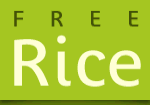
Aug 20, 2010
Index tags poor nations with conflicts as highly vulnerable
The Food Security Risk Index 2010 is compiled by a British risk analysis firm, Maplecroft, on the basis of 12 factors drawn up in collaboration with the United Nations' World Food Programme.
The criteria include rates of malnutrition, cereal production and imports, gross domestic product per capita, risk of extreme weather events, quality of agricultural and distribution infrastructure, conflict, and government effectiveness.
The poorest nations and those with conflicts have the greatest difficulties in ensuring their population has access to sufficient food, Maplecroft said.
Afghanistan was judged to be at the highest risk despite the billions of dollars of aid pumped into development projects since the 2001 United States-led invasion that overthrew the Taleban.
'The ongoing conflict in Afghanistan impacts infrastructure readiness, and the capability for distribution of supplies is greatly reduced,' Ms Fiona Place, an environmental analyst with Maplecroft, said.
'It's the impact on the road networks and the telecommunications infrastructure.'
Of the 50 nations most at risk, 36 were from sub-Saharan Africa and grappling with poor harvests and failing transport networks.
Among countries that were rated at 'high risk' or with unreliable supplies were Bangladesh, Pakistan, India and the Philippines, while countries deemed at 'medium' risk included China.
'Pakistan and sub-Saharan Africa which are dependent on food imports are going to be all the more vulnerable,' Ms Alyson Warhurst, head of Maplecroft, said.
Maplecroft attributed climate change to the leap in wheat prices this year and warned of harsh consequences for vulnerable nations.
Russia's worst drought in half a century prompted the country on Aug 5 to ban grain exports. Cereal production in Canada has been hit by flooding, while extreme temperatures in Ukraine and Kazakhstan have lowered cereal output, according to Maplecroft.
Ms Warhurst said the Russian export ban would add pressure on China to supply more food to world markets at a time when its domestic wheat and meat consumption were rising.
Maplecroft said it hoped the index could help in directing food aid or to guide investments in food production.
The most favourably placed countries with a low risk were the developed economies of North America and Western Europe, with Finland the most food-secure, followed by Sweden, Denmark and Norway.
Some European nations, including Italy, Greece and Portugal, had a medium risk.
Those nations 'don't produce enough of their own food supply, so they're dependent on importing', Ms Warhurst said. 'Basically, they're going to have to pay more for their imports.'
AGENCE FRANCE-PRESSE, REUTERS
1. What are the factors used as consideration to determine a country's food security?
2. Why do poor countries have difficulty in accessing food?
3. Which region has the worst food security problem and why?
4. What do you think about Singapore's food security? Explain why.












No comments:
Post a Comment